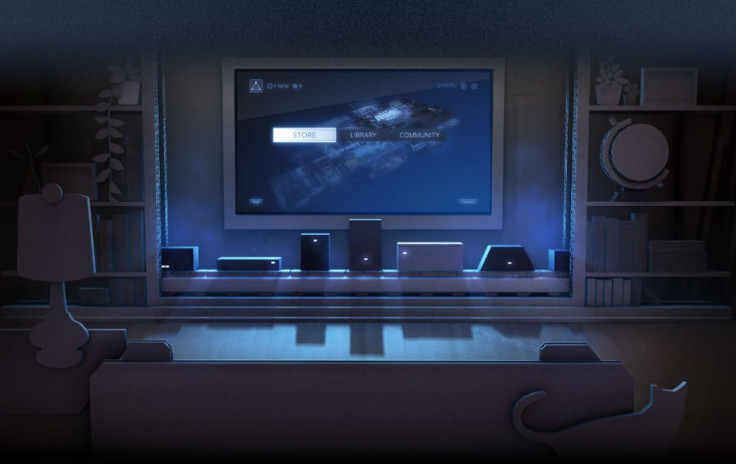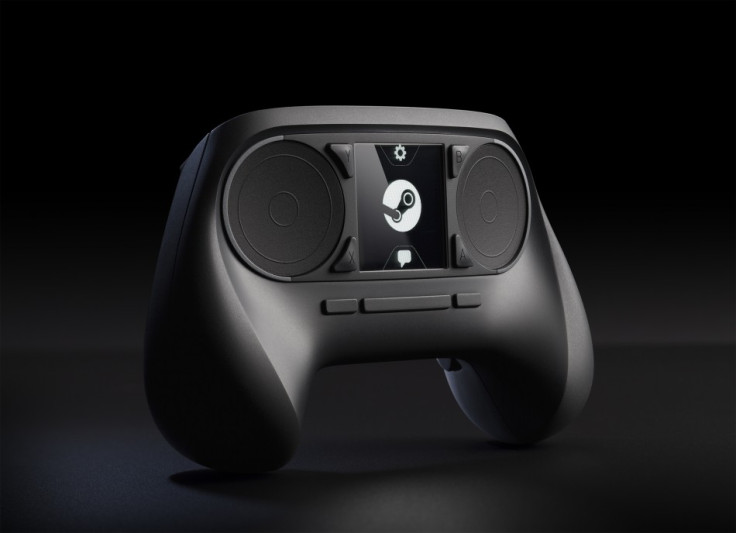Valve's Steam Machines Just the Start of a Much Bigger Plan

Like the turret opera sequence from the end of Portal 2, I don't think anyone saw this coming. At CES 2014, Valve announced that, rather than launch its own Steam-based console, the mythical Steambox, it's instead partnered with 13 existing hardware makers to launch a range of "Steam Machines", variously priced living-room consoles that will allow users to download games directly from Steam to play on their television sets.
It's a surprising move. Valve has been edging towards the living-room for a while now, first with Steam's Big Picture mode, then with the Steam controller and then with SteamOS. The natural next step, it seemed, was the launch of a fully-fledged console – in 2013, Valve even ran a beta of 300 Steam Machines it had itself built.
So what is Valve doing with this partnership deal?
It's certainly not positioning itself as a competitor to the PS4 or Xbox, since even the lowest priced Steam Machine, developed by CyberPowerPC, will cost $499 in the US, the same as an Xbox One. It's also not making money from licensing SteamOS. The operating system is free to use, meaning gamers could even build their own PC rigs that run it, essentially making their own custom Steam Machines.
What's in this for Valve? Does the company expect these new machines will foster new Steam users, and more digital sales revenue as a result? Or, rather than compete with PS4 and Xbox, is the company looking to challenge Windows, initially shipping Steam Machines as gaming boxes before opening SteamOS up to film and media streaming, and other PC functions?
Multiple outcomes
Heloise Thomson, an analyst with Enders, says the partnerships could create multiple outcomes for Valve:
"It's such a different strategy from what Sony, Microsoft and Nintendo have done, which is to launch a single definitive branded box and license the rights to software out to developers. I think we have to be wary about thinking about what they're doing from a console perspective.
"Consoles are about exclusion - unique software deals that make your platform competitive, while fighting for the best market price for your box. Valve has done the opposite: give the operating system away for free and license the Steam brand out to any serious partners who want to sell a box with their OS on it, making money from their Steam marketplace."
While Valve's Gabe Newell played up the 65 million users Steam now has, this is the whole story:

"Looking at the Steam stats, the peak global concurrent users in the last 24 hours was 7.3m, the greatest proportion of whom are playing Dota 2 (578k at peak). If we assume that that is the average peak on an average day, only 11% of the 65m users are regularly active. The rest we can assume are occasional, irregular, very infrequent, or one-time users. These are wild assumptions, but it's worth trying to size the portion of Steam's supposedly massive audience of 65m users for the market that will actually buy one of these Steam Machines," Thomson says.
Therefore the question remains: Who is going to buy these machines?
Thomson has some ideas: "Gamers who haven't had a PC gaming rig before and want a convenient option? Gamers who want an upgrade with the Steam OS already running? I imagine many of those gamers are the sort that wait for the Steam sales and then mass buy digital downloads at half price. These are not necessarily people with $500-$6000 just lying around waiting to be spent on a mega gaming rig."
Part of a bigger picture
So maybe this is part of a bigger plan. In an interview with The Verge, at last year's CES, Valve co-founder Gabe Newell said SteamOS would allow users to run web-browsers, streaming services and other PC programs.
He's also expressed distaste towards Windows 8 in the past, calling it a "giant sadness" and "a catastrophe for everyone in the PC space":
"I think we'll lose some of the top-tier PCs, and OEMs (original equipment manufacturers) who will exit the market," Newell said at the Casual Connect conference in 2012, as reported by PC Gamer. "If that's true, then it will be good to have alternatives to hedge against that eventuality."
Perhaps SteamOS (which is based on Linux) and the Steam Machines are that alternative. They're expected to have the same range of functionality as a PC with the added bonus that they can be conveniently plugged in and played on a television set.
Not an easy sell
Thomson believes that Valve's move is far from a guaranteed success:
"This is a big effort from Gabe to get out from under Microsoft and Windows and have more control from on top of a Linux-based system. And the reason why they're not running out the gate to lose money on risky manufacturing projects is because this is by no means a sure thing. Convincing PC Steam gamers who already have PCs to buy a new expensive living room PC isn't an easy sell, nor is convincing console gamers to come over to Steam with a pricier box. But it's something Valve wants to try, to break through the established walled-arcades. The structure of the company means that they are creative and independent, and free to try out new ideas and see where they go.
"Looking at what the Steam OS offers you can see that they have designs on providing more than an enhanced gaming experience. Perhaps this is a larger play."
Worth noting is that SteamOS will allow users to play Windows and Mac games, as well as games from Steam. Newell has also said that when Valve releases its own Steam Machine, users will be able to load the Windows operating system onto it if they want.
Openness
In fact, Origin PC's "Chronos" Steam Machine, revealed at CES 2014, can dual-boot SteamOS and either Windows 7 or Windows 8.
So what Valve is proposing is openness. Its operating system will be free and will run on machines available from dozens of manufacturers. And if you don't like it, you can use another operating system – you can access games from outside the Steam catalogue.
Though the Steam Machine partnership announcement may at first seem bewildering, looking back at what Gabe Newell said, again at Casual Connect, it starts to make sense:
Valve wouldn't exist today without the PCOr Epic. Or Zynga. Or Google.
"Valve wouldn't exist today without the PC. Or Epic. Or Zynga. Or Google. They all wouldn't have existed without the openness of the platform. There's a strong temptation to close the platform, because people look at what they can accomplish when they limit the competitors' access to the platform.
"[But] we are looking at the platform and saying, 'We've been a free rider, and we've been able to benefit from everything that went into PCs and the Internet, and we have to continue to figure out how there will be open platforms."
Big Picture Mode, SteamOS, the partnerships with OEMs – all of this is part of an effort by Valve to make Steam and open PCs appealing and affordable to as many people as possible. It's a very long-term plan that, unfortunately, might struggle to gain traction, considering the high prices of Steam Machines that have been quoted so far. But once those come down – and they inevitably will – Valve will be in a strong position to not just own PC gaming but also claim a large chunk of PC users overall.
For all IBTimes UK coverage from Las Vegas, make sure to visit our CES 2014 hub.
© Copyright IBTimes 2024. All rights reserved.









